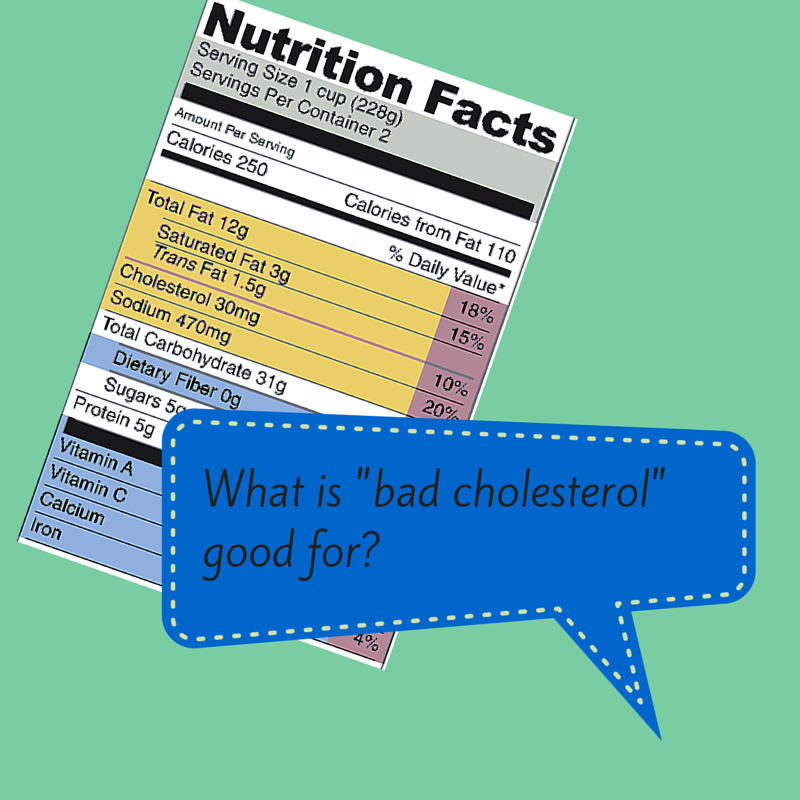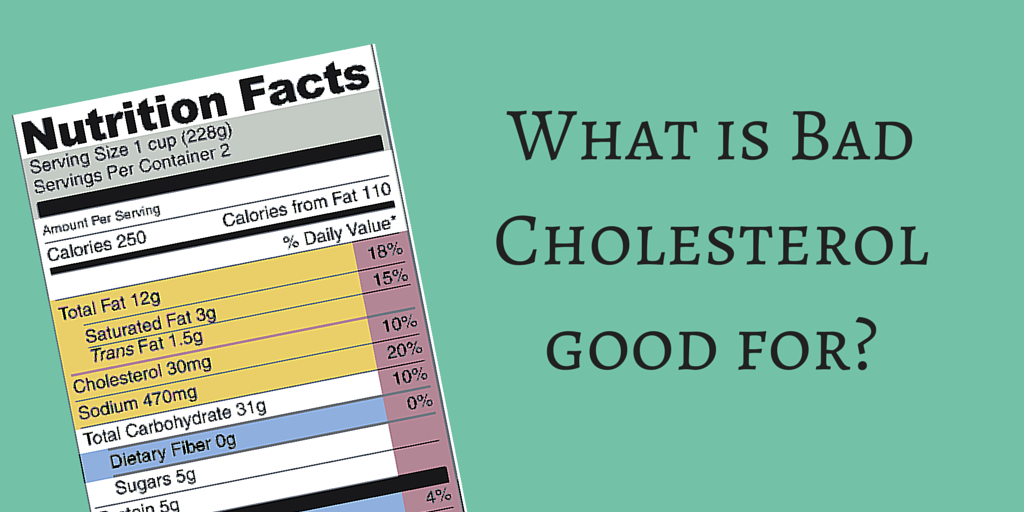 So at this point we have all become aware of it. The one thing you close your eyes tight and hope you don’t hear when you’re physician is reporting your blood test results for your check up. That mysterious grim reaper which plagues families and nations…
So at this point we have all become aware of it. The one thing you close your eyes tight and hope you don’t hear when you’re physician is reporting your blood test results for your check up. That mysterious grim reaper which plagues families and nations…
The Bad Cholesterol
Also referred to as Low Density Lipoprotein (LDL).
OK. So what the heck is it? Does it even have a purpose? Or is it just a feature of those poor saps with bad genes? Or maybe it’s a product of our “fast food culture.” Yeah, shame on McDonald’s once again!
Well if you’ve read my post on the danger of fried foods you might be ready to say, “Hey it’s the PUFAs… and the already damaged trans fats which corrupt the LDL and make it bad!” If you also went as far as to read the article I cited, you may say, “Hey it’s the oxidized cholesterol and altered production of phospholipids which create the inappropriate state of function associated with heart disease.” There are a lot of things right in all of those statements. However, they just don’t complete the picture.
There is, in actuality, much more to consider when trying to nail down all the details of the cardiovascular conditions which have brought about a wide-spread epidemic within industrialized nations we call “Heart Disease.” You are right not to be satisfied with those answers, and you may be thinking…
“But still, what about those blood tests? You know, the ones where my doctor tells me I have too much bad cholesterol and not enough of the good?”
Maybe even your doctor says, “Well your total cholesterol is outside of the normal range, but your bad cholesterol is fine and your good is high, so I think it’s just fine for now. We’ll just keep an eye on it.”
Phew…right?
Well, there is a tremendous amount of conflicting information about appropriate ranges and if cholesterol is even the problem or the solution (1,2).
As usual, I could outline the aspects of all these arguments that allow them to be righteous in their statements, and how they rely on an ability to turn a tremendous blind eye towards the truth in the opposing argument. I could talk about how the real answer staring them all in the face is being overlooked completely.
Luckily, in this case we can skip all that and just talk about the actual function of the LDL in the body. At least by doing this we can demystify the test results and help bring some actual reason to the process of trying to avoid heart disease.
LDL in an acronym for Low Density Lipoprotein, and in fact is not cholesterol at all. Lipoproteins are produced primarily as transport mechanisms in the blood. They basically attach to and carry stuff around in the bloodstream. Whether or not LDL is actually well-correlated with heart disease is still up for debate in some intelligent people’s perspective (3). LDL is, however, in a relationship with cholesterol. The reason why LDL is associated with cholesterol is that it is the primary carrier of cholesterol in the blood to the target organ which uses it.
So what good is LDL, and why is it in our blood if it’s not just some genetic mishap?
As LDL is the primary method of delivering cholesterol to the cells which use them, the most important thing that LDL does is deliver the cholesterol where it needs to go (4).
Wait, you mean cholesterol is useful?!
Cholesterol is one of the most essential building blocks of our body (5,6). It is important to the health of our cell structure and division (7,8), our bile, and vitamin D production (9), as well as the production of our hormones(10). In fact, higher levels of cholesterol are shown to be important for protection against stress-related degeneration. including oxidative damage and thermal shock (11,12). As a structural component, it stabilizes the cells membrane in a way that not only allows it to function better, but improves its resistance to bacterial invasion (13). It is even being explored how cholesterol seems to be important to the prevention of cancer (14). As any challenge resulting in stress raises cholesterol (15), it seems a sensible view that high cholesterol under stress is the bodies way of trying to protect itself. Without enough cholesterol, we will become seriously ill. So while it is the case that when our diet and environment disturb the quality of our cholesterol it can be a problem, removing cholesterol is not the way toward health.
Another important role of the LDL particle, which has nothing to do with delivering cholesterol, is its part in our immunity to toxins and infection. It attaches to toxic byproducts of bacteria (16) and even protects against degenerative effects of pneumonia (17). The lower LDL levels a pneumonia patient has, the worse their prognosis for recovery and survival.
A big point of focus right now is on the idea that LDL is prone to being oxidized, and this is part of why it is “bad” (18). There is even a school of thought showing that a lipoprotein, Lp(a), is especially prone to oxidation. Furthermore, this line of thought dictates that individuals with “bad” genes, which produce more of this “bad” lipoprotein, are predisposed to heart disease and there is really nothing to be done about it (19). I think there is a long discussion which can be had about how focusing on this feature of the bodies normal physiology may be taking attention away from the environmental factors which exploit the LDL subgroups vulnerabilities and impose damage. For the purpose of this blog, however, I will stick to the positive aspect of the Lp(a). Highly reactive oxidized particles in the system are a tremendous danger to the cells, and the protein molecule that makes Lp(a) what it is is also extremely good at attaching to and removing these dangerous oxidized particles. So as long as the system is in a good balance, the fact that the Lp(a) is attaching to and removing oxidized materials before they can poison and damage cells could be viewed as a great aid to the system. The Lp(a), for similar reasons, seems to be particularly effective at protecting against other toxins in a similar way as the entire family of LDL particles (20).
So the “bad” cholesterol is actually there for good reason?
It is important to maintaining your health. This is not to say that the whole idea that LDL cholesterol contributes to plaque accumulation is completely wrong. The size and oxidized state of the particle can be shown to have a relation to the development of cardiovascular disease. What I mean to show is that the idea that these particles are bad, or even not useful, is just plain wrong. The environment which allows for the derangement of the cholesterol and lipoproteins (21,22) is controllable. In fact, healthy cholesterol and lipoproteins of all sorts are able to help maintain the appropriate environment. The important thing is to maintain a diet and lifestyle that brings balance to the internal state and allows the health giving LDL and other lipoprotein particles a chance to perform their roles within the system optimally.
SPECIAL EVENT
If you are ready to get started making changes to your lifestyle that last, I would love it if you would join us on December 10th for my first-ever presentation of Managing Daily Stress in my home city of St. Louis. I have conducted this workshop at several locations out of state, but I’m very excited to finally be presenting it here! This is the first of three in my Foundation for Healthy Living Workshop series, and I built them in a specific order to help guide your next steps.
This presentation will be held at Nebula Coworking from 6-8pm and only costs $20 to attend. You can get your tickets through the Eventbrite event page below and you can easily add it to your Google, Outlook, Yahoo, or iCal calendar right from the site after you sign up. Read more about it (and a bonus special offer!) here on my blog OR get your tickets @ managingdailystress.eventbrite.com
We also have this SPECIAL OFFER just for attendees that night:

Please mention this to me at the event to claim yours!
References:
(1)Ufi revenskov good analasys of cholesterol and atherosclerosis relationship
http://www.ravnskov.nu/cholesterol.htm
(2) Article reviewing cholesterol alleged role in atherosclerosis growth and potential protective mechanisms against artery degeneration and pathology
http://qjmed.oxfordjournals.org/content/96/12/927.full
(3) Article showing no correlation between LDL and heart disease.
http://m.qjmed.oxfordjournals.org/content/95/6/397.full
(4) Cholesterol delivery for steroid production in depth look at lipoprotein role
http://www.nutritionandmetabolism.com/content/7/1/47
(5) Simple description of all the important roles cholesterol play in the body with respect to regulating cell function
http://www.cholesterol-and-health.com/Cholesterol-Cell-Membrane.html
(6) Another broad and simple explanation of benefits of cholesterol
http://epicureandigest.com/cholesterol-benefits-and-importance-3/
(7) Cholesterol binds to cell receptor sites and is important stabilizing structure
http://www.cell.com/structure/abstract/S0969-2126(08)00174-3
(8) Cholesterol necessary for healthy cell division
http://www.ncbi.nlm.nih.gov/pubmed/15383319
(9) Cholesterol used for vit d production
http://www.ncbi.nlm.nih.gov/books/NBK22339/
(10) Cholesterol and steroidagenisis
http://www.ncbi.nlm.nih.gov/pmc/articles/PMC3283258/
(11) Increased cholesterol content of the membrane protects against oxidative stress
http://www.ncbi.nlm.nih.gov/pubmed/16620793
(12) Higher cholesterol to phospholipid ratio in membrane protects against thermal damage and death
http://www.ncbi.nlm.nih.gov/m/pubmed/2949827/
(13) Cholesterol structural component of membrain stabilizes lipid rafts allowing for function of signaling and protects against bacterial invasion
http://iai.asm.org/content/73/12/7791.full
(14) Cholesterol important in cell division and signaling protective against disease and cancer
(15) Mental stress and change in posture to a standing position create an acute increase in cholesterol.
http://www.ncbi.nlm.nih.gov/m/pubmed/1558435/
(16) Single dose of endotoxin alters lipid profile in humans ldl lowered (clean up and removal)
http://www.jlr.org/content/44/8/1489.full.pdf
(17) Pneumonia and LDL
http://www.ncbi.nlm.nih.gov/m/pubmed/19330560/
(18) Ldl particle size correlated with increased accumulation of oxidised ldl
http://www.ncbi.nlm.nih.gov/pubmed/17975118
(19) Lp(a) association with oxPL
http://atvb.ahajournals.org/content/27/10/2094.long
(20) Lp(a) protective against endotoxin
http://www.ncbi.nlm.nih.gov/pmc/articles/PMC108207/
(21)OxPL overview of interactions including atherosclerosis it is PUFA dependent and increases with increased FFA
http://www.ncbi.nlm.nih.gov/pmc/articles/PMC3121779/#!po=8.40000
(22) Endotoxin increases oxidation of lipoproteins
http://www.ncbi.nlm.nih.gov/pmc/articles/PMC2674700/
Cholesterol in membrain highest during metaphase
http://jcs.biologists.org/content/126/14/2990.short
Lp(a) oxpl lpPLA2 apo(b)
http://atvb.ahajournals.org/cgi/content/meeting_abstract/32/5_MeetingAbstracts/A490
Lp-pla2
http://www.ncbi.nlm.nih.gov/pubmed/17892360
Lp(a) increase in hypothyroid reduced turnover
http://www.ncbi.nlm.nih.gov/pubmed/10378018
Lp(a) reacts poorl to hypo lipid drug treatment








2 Comments